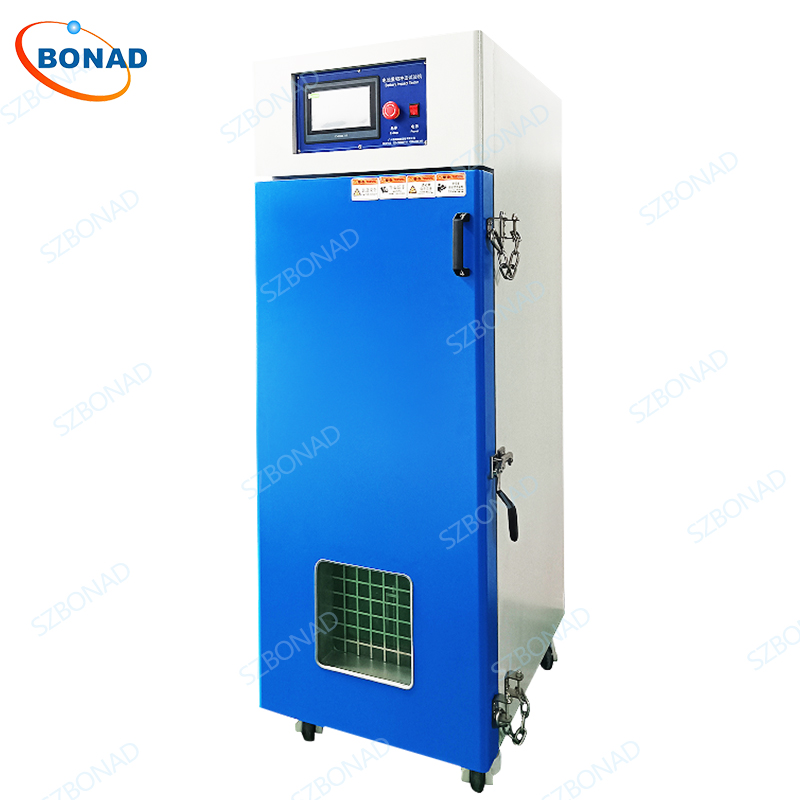Introduction:
The Battery Heavy Object Vertical Impact Tester, is a crucial device for evaluating the safety performance of lithium batteries. This equipment simulates the impact on lithium batteries when a heavy object falls freely from a specific height. It observes the battery’s reaction to external forces and assesses its safety performance, including the likelihood of fire, explosion, smoke, or leakage. In this article, we will explore the significance of the Battery Heavy Object Vertical Impact Tester in ensuring the safety and reliability of lithium batteries.

Understanding the Battery Heavy Object Vertical Impact Tester
The Battery Heavy Object Vertical Impact Tester is designed to replicate real-world scenarios where batteries may face accidental impact or falls. By subjecting the batteries to controlled impacts, it enables manufacturers to identify potential vulnerabilities and enhance the safety features of their products.
The tester consists of a rigid platform, a heavy object, and an adjustable height mechanism. During the test, the heavy object is released from a predetermined height and allowed to strike the battery sample positioned on the platform. The impact energy generated is measured and recorded for evaluation. This information helps manufacturers understand how their batteries react to different impact forces and assists in optimizing the design and composition of lithium batteries to ensure maximum safety.
Evaluating Safety Performance
The Battery Heavy Object Vertical Impact Tester plays a critical role in evaluating the safety performance of lithium batteries. By subjecting batteries to controlled impacts, manufacturers can assess various aspects, including thermal runaway, fire resistance, structural integrity, and leakage.
Thermal runaway refers to a condition where the battery’s temperature increases uncontrollably, potentially leading to fire or explosion. By conducting impact tests, manufacturers can detect any signs of thermal runaway and take necessary precautions to prevent such incidents.
Additionally, the impact test helps assess the structural integrity of the battery. A well-designed battery should withstand the impact and remain intact without causing any physical damage or leakage. By analyzing the results of the test, manufacturers can identify weaknesses in their battery designs and make necessary improvements.
Benefits and Applications
The Battery Heavy Object Vertical Impact Tester offers several benefits and finds applications across various industries. Here are some key advantages and applications:
- Safety Assurance: The impact test enables manufacturers to ensure that lithium batteries meet safety standards and regulations, providing end-users with confidence in the products they use.
- Product Development: By understanding how batteries respond to impact forces, manufacturers can improve their product designs, making them more durable and safer.
- Quality Control: The tester aids in quality control by identifying and eliminating potential issues during the manufacturing process, reducing the likelihood of product recalls or safety incidents.
- Research and Development: The data obtained from impact testing contributes to research and development efforts, facilitating the advancement of battery technology and safety.
In conclusion, the Battery Heavy Object Vertical Impact Tester is an essential tool for evaluating the safety performance of lithium batteries. Through controlled impact testing, manufacturers can ensure that their batteries meet safety standards, reduce the risk of accidents, and continuously improve product reliability.


